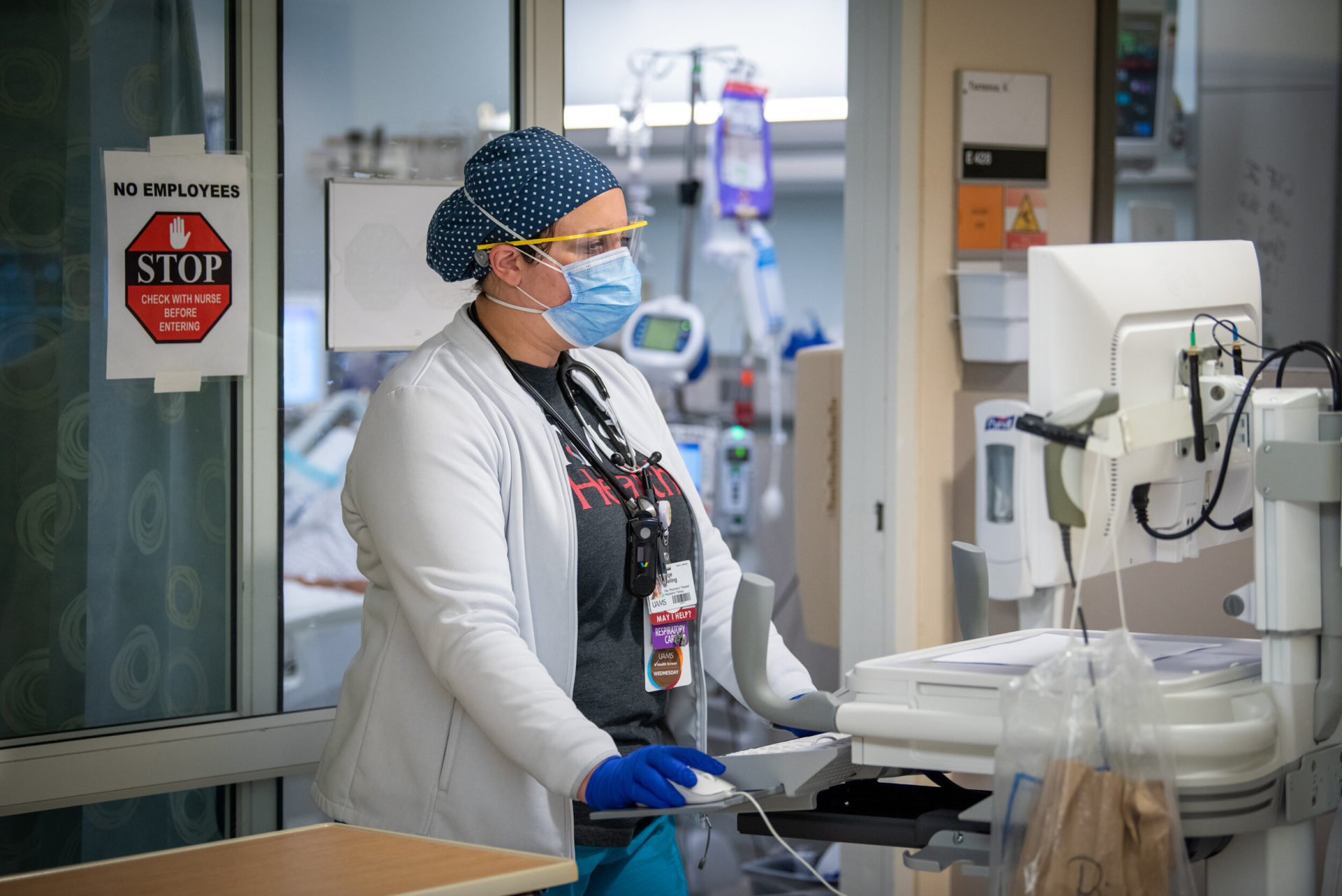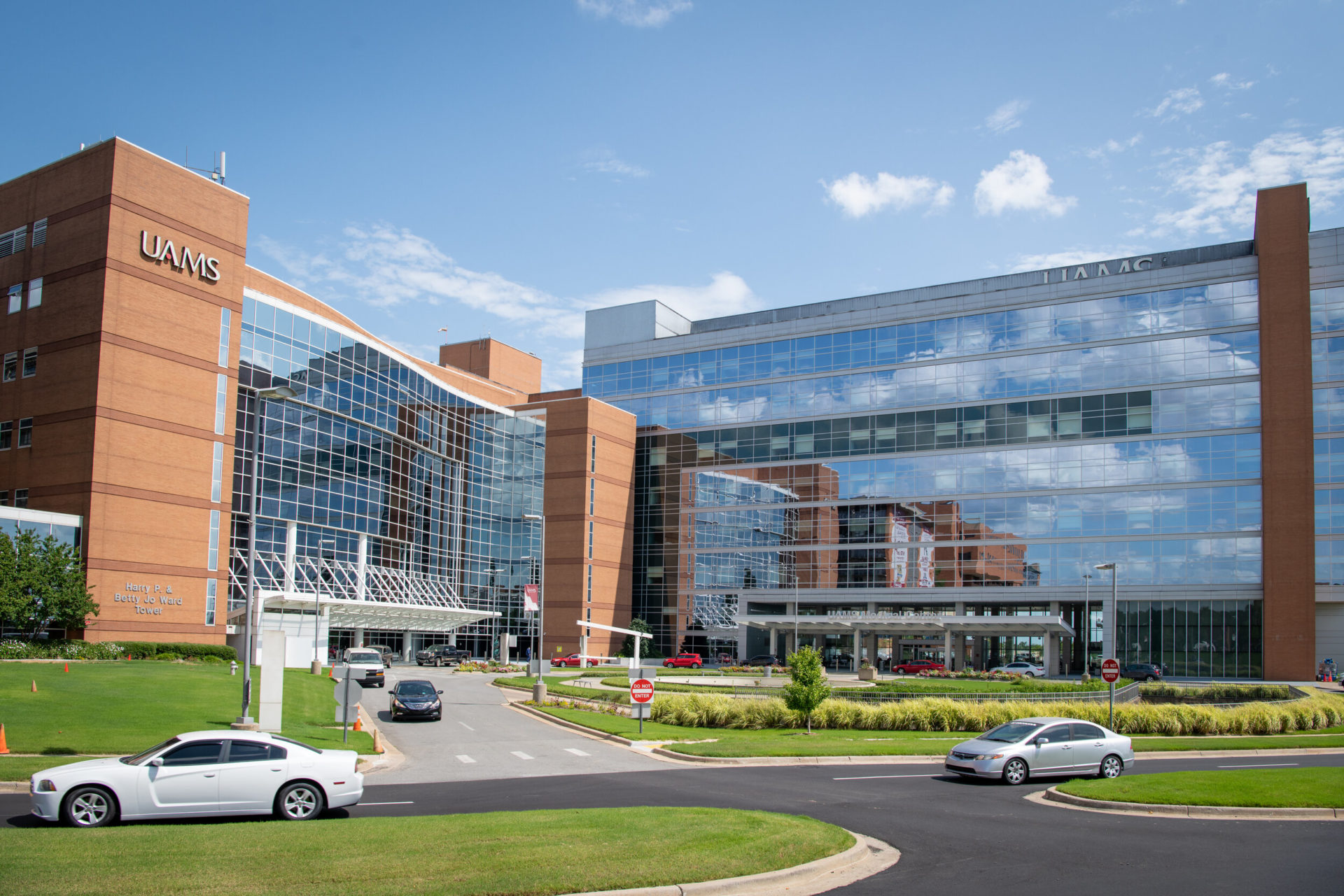
A smoldering forest fire is the analogy our College of Public Health used for several weeks as we braced for another spike in COVID-19 cases in Arkansas. Unfortunately, the arrival of the Delta variant, low state vaccination rates, and laxity in masking and social distancing have fanned what were once embers to the point that we now find ourselves in a raging inferno of cases.
As chancellor of the University of Arkansas for Medical Sciences, the state’s only academic medical center and CEO of our health system, I’m fortunate to work with some of the greatest medical professionals, educators, and researchers in the country. However, the state’s healthcare system is running low on resources and our frontline workers are physically and mentally fatigued. We are nearing the breaking point if we don’t get this pandemic under control soon.
According to the Arkansas Department of Health, only about 40 percent of Arkansans over the age of 12 are vaccinated, which is one of the lowest vaccination rates in the country. The number of hospitalized patients continues to rise exponentially and hospitals statewide are full. Here at UAMS, the number of patients with complications of COVID-19 has increased by 20 in just one week to our current census of 75 (as of July 27). That number is a record for us, surpassing the winter mark of 63 set in January of this year. We expect that number to continue to soar and we are making plans to open a third COVID-19 unit.
The Delta variant is almost an entirely new illness when compared with the variants we faced in the first two surges of the pandemic. It is much more virulent than what we faced before – spreading and progressing faster. Many patients go straight from the Emergency Department to being on a ventilator in our Intensive Care Unit.
Patients ending up in the hospital because of the Delta variant are also younger than those we saw before. The average age for COVID-19 patients in our hospital now is 40. Last year and early this year, the hospitalized coronavirus patients we saw were primarily older adults between 60 to 80 years old – many with underlying health conditions like diabetes or heart disease.
Children for the most part didn’t end up in the hospital during the first two surges. Arkansas Children’s Hospital, our pediatric partner, didn’t have patients hospitalized several months ago because of COVID-19. They used their resources to help lessen the burden on adult hospitals by taking trauma and other patients under the age of 25. Now, 24 children are hospitalized at Arkansas Children’s with complications of the coronavirus. We are trending in the wrong direction, especially with school starting soon.
We have had good success in treating the delta variant at UAMS by utilizing ECMO (heart and lung bypass machines) to save patients’ lives. Unfortunately, some of those ECMO patients were pregnant women who suffered miscarriages. That’s another trend we are seeing that we didn’t see before, about 20 percent of the patients hospitalized at UAMS for complications due to COVID-19 have been pregnant women.
Just over a month ago, we had single-digit numbers of patients hospitalized for COVID-19. Our health care workers were seeing what they thought was the light at the end of the tunnel. Now, everyone else in our state seems to have moved on with their lives while our nurses, doctors, technicians and others are battling another wave of cases that could have been prevented. However, this one is worse. There are no mask mandates, stores are open, and people are congregating with no regard for social distancing.
During the first wave of cases last year, there was a great outpouring of support for our health care heroes. There were flyovers from the Blue Angels, restaurants and church groups delivered meals every day, and school children sent thank you cards. Now the thanks are sincere but more sparse. Our workers are tired and frustrated. Some have left due to the many months of trauma and fatigue and those who are remaining are taking on extra shifts and doing the very best they can.

Our healthcare workers in Arkansas are dedicated and they are some of the best in the country. But, they aren’t in the first quarter anymore, they are in double overtime. Our biggest challenge isn’t beds, it’s having enough health care professionals. At UAMS, we have nearly 140 open nursing positions and other hospitals are scrambling to fill vacancies too. Statewide we are close to being at the end of our rope.
Arkansas health care leaders are in talks with Governor Asa Hutchinson and Arkansas Department of Health Secretary Jose Romero, M.D. and we are looking at contingency strategies to work together to expand our resources. The governor is traveling the state holding town hall meetings to try to convince Arkansans to get vaccinated. Dr. Romero’s team, UAMS, and other health care providers are holding mobile vaccination clinics around the state to take vaccines to people where they live and improve access. Unfortunately, turnout at most of these events is light at best. We continue working with churches and community influencers in hopes that they can help reach the unvaccinated and convince them that getting the shots is a better alternative to ending up on a ventilator in our hospitals.
In Arkansas, we are fighting the same misinformation regarding COVID-19 vaccinations that is swirling around other parts of the country. However, we also must overcome hurdles that only rural states like ours face, such as poor access to healthcare, a lack of education, and lower socio-economic status. Despite these obstacles, we are working hard to reach all Arkansans.
With autumn on the horizon, things are likely to get worse before they get better. Schools are opening in just a couple of weeks and the colder weather will bring Arkansans indoors to tighter spaces with higher transmissibility. Even if everyone who is unvaccinated got the jab tomorrow, it will take about six weeks for them to be protected. In the meantime, we can take simple measures to protect ourselves. Masking works and social distancing works, and we need to keep up these measures to protect our neighbors and ease the burden of our healthcare workers. We can’t walk away from this fight.






